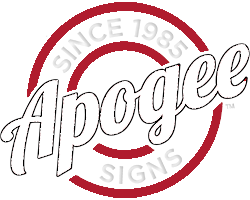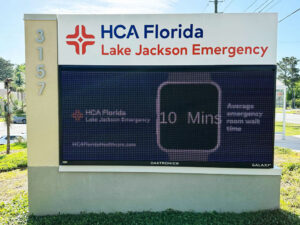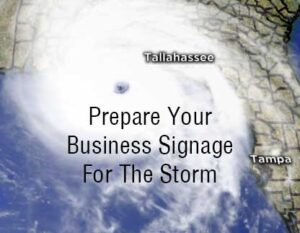 The Gulf Coast area has been no stranger to the destructive force of past storms. From the devastating hurricanes and tropical storms that have battered the region, the importance of preparedness and protection cannot be emphasized enough. As hurricane season begins, it’s crucial for businesses to take proactive measures to protect their assets, including signage. Business signage not only represents your brand but also serves as an important communication tool for customers. By preparing your business signage for a hurricane, you can minimize damage, ensure the safety of individuals in the vicinity, and expedite the recovery process.
The Gulf Coast area has been no stranger to the destructive force of past storms. From the devastating hurricanes and tropical storms that have battered the region, the importance of preparedness and protection cannot be emphasized enough. As hurricane season begins, it’s crucial for businesses to take proactive measures to protect their assets, including signage. Business signage not only represents your brand but also serves as an important communication tool for customers. By preparing your business signage for a hurricane, you can minimize damage, ensure the safety of individuals in the vicinity, and expedite the recovery process.
Business signage not only serves as a visual representation of your brand but also acts as a critical communication tool for customers. It guides them to your location, conveys important information, and establishes your presence in the community. However, during a severe storm, your signage is at risk of being damaged, torn apart, or becoming dangerous debris.
The significance of protecting your business signage from the destructive forces of hurricanes cannot be overstated. By taking proactive measures to prepare and safeguard your signage, you not only protect your brand’s identity and visibility but also ensure the safety of individuals in the vicinity and contribute to the overall resilience of your business.
In this guide, we will explore the essential steps to prepare your business signage for an impending storm, drawing lessons from past storm damage to the Gulf Coast. From reinforcing the structure to securing or removing signage, protecting electrical components, and effectively communicating with customers, these measures will help you safeguard your business signage and mitigate potential risks. By prioritizing the protection of your signage, you demonstrate a commitment to safety, maintain your business’s continuity, and contribute to the collective efforts of building a more resilient Gulf Coast community.
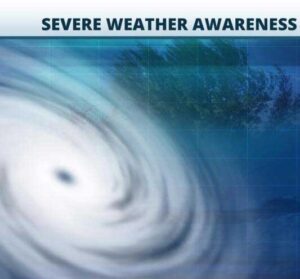
Stay informed: Monitor local weather updates and follow the instructions of local authorities to stay updated on the approaching hurricane and its expected impact on your area. Keep a close eye on weather reports, listen to local news broadcasts, and utilize reliable weather websites or mobile apps to receive real-time information. Understanding the severity of the hurricane and its projected path will help you make informed decisions regarding your signage preparation.
Once you have reliable information about the hurricane, assess the potential risks to your business signage. Consider factors such as the wind speed and direction, expected rainfall, and the likelihood of debris or flooding in your area. Local authorities may issue specific guidelines or recommendations for businesses in hurricane-prone regions, so it’s essential to stay informed about any mandatory evacuation orders or safety protocols.
By staying informed and understanding the potential impact of the hurricane, you can determine the appropriate level of preparation required for your business signage. Taking proactive steps ahead of time will not only minimize potential damage but also demonstrate your commitment to the safety of your customers and employees.
Reinforce the structure: Ensuring that your signage is securely mounted to a sturdy structure is crucial in preparing for a hurricane. Conduct a thorough inspection of the attachment points and supports for your signage well in advance of the storm. Look for any signs of weakness, such as loose bolts, rusted brackets, or deteriorating materials. Make any necessary repairs or reinforcements promptly to strengthen the structure.
Consider consulting with a professional sign installer or structural engineer who can assess the integrity of your signage’s mounting system. They can provide expert guidance on reinforcing weak areas and recommending additional measures to withstand high winds. Reinforcement options may include adding additional brackets, braces, or supports to enhance the stability of the signage.
Use durable and weather-resistant materials for any repairs or reinforcements. Use high-quality hardware, such as stainless-steel screws or bolts, that can withstand the elements. Additionally, ensure that the fasteners are properly tightened to prevent any loosening during strong winds.
By reinforcing the structure, you increase the chances of your signage remaining intact and secure during a hurricane. This not only protects your investment but also reduces the risk of your signage becoming hazardous debris that could cause damage to other properties or harm individuals during the storm.
Remove loose objects: Prior to the hurricane’s arrival, it is crucial to remove any loose objects or debris that could become potential hazards during high winds. Evaluate your signage area and surrounding premises for any items that could be easily picked up by strong gusts and cause damage.
Start by identifying temporary signage, banners, flags, or any other loosely attached elements that could be torn or detached by high winds. Take down and store these items indoors or in a secure location to prevent them from becoming airborne projectiles.
Inspect the immediate vicinity of your signage for any loose objects that could pose a risk. This includes items such as potted plants, outdoor furniture, trash cans, or signage accessories. Secure or relocate these objects to a safe area where they will not be susceptible to wind-driven movement.
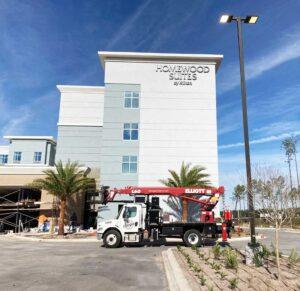
Trim any nearby trees or branches that could potentially break and damage your signage during the storm. Falling branches can not only harm the signage but also create a safety hazard for people in the vicinity. If necessary, seek professional assistance to ensure proper tree trimming or removal.
By removing or securing loose objects, you minimize the risk of these items causing damage to your signage or posing a danger to people nearby. Taking these proactive measures demonstrates your commitment to safety and reduces the potential liabilities associated with flying debris during a hurricane.
- Secure or remove signage: Depending on the type and size of your signage, you have a few options to protect it during a hurricane:
For smaller signs: Consider removing them completely if they are not essential or can be easily damaged. Store them indoors or in a safe location away from the path of the storm. This could include signs such as A-frames, portable banners, or lightweight temporary signs. Taking them down and storing them will ensure they are not susceptible to strong winds or potential impact.
For larger signs: If removing them is not feasible or practical, it’s important to reinforce them to withstand hurricane-force winds. Start by inspecting the structural integrity of the signage. Check for any loose or weak areas that need attention.
Consider reinforcing the signage by adding extra support and bracing. This can be achieved by installing additional anchors, braces, or crossbeams to enhance stability. Use sturdy materials such as steel cables, chains, or heavy-duty straps to secure the signage to immovable structures like buildings or poles.
Ensure that all fasteners and connections are properly tightened and reinforced. Use weather-resistant hardware that can withstand high winds and exposure to the elements. Reinforcing the signage will significantly reduce the risk of it becoming dislodged or damaged during the hurricane.
Additionally, if your signage has any detachable elements such as letters, panels, or lighting fixtures, remove them and store them indoors. These components are often more vulnerable to damage and can be easily dislodged by strong winds.
By securing or removing your signage, you minimize the risk of it being torn, damaged, or posing a threat to nearby structures or individuals. These precautions demonstrate your commitment to safety and protect your signage investment from potential hurricane-related damage.

Protect electrical components: If your signage includes electrical components, such as lights or digital displays, it is essential to take steps to safeguard them from the effects of a hurricane:
Turn off power: Prior to the hurricane’s arrival, shut off the power supply to the signage. This will help minimize the risk of electrical damage caused by power surges, water exposure, or other potential hazards. Follow proper electrical safety protocols and consult with a qualified electrician if needed.
Waterproofing: Use weatherproof covers or enclosures to protect electrical components from rain and water damage. Ensure that these covers are securely fastened and provide adequate protection against high winds and heavy rainfall. Consider using sealants or gaskets to create a watertight seal around all electrical connections.
Secure wiring: Check all electrical wiring associated with your signage for any signs of wear, damage, or loose connections. Properly secure and protect the wiring to prevent it from being exposed or vulnerable to wind, debris, or water. Use appropriate conduit or protective casings where necessary.
Consider temporary removal: If possible, consider temporarily removing any vulnerable electrical components, such as lights or digital screens, from the signage. Store them in a safe and dry location until the hurricane has passed. This will help prevent potential damage to these sensitive elements.
By protecting the electrical components of your signage, you reduce the risk of electrical hazards, equipment damage, and potential malfunctions. Properly safeguarding these components demonstrates your commitment to safety and ensures a quicker recovery process after the hurricane has subsided.
 Document your signage: Before the hurricane hits, it’s important to document the condition of your business signage. This documentation can serve as valuable evidence for insurance claims and facilitate the recovery process. Here are some steps you can take:
Document your signage: Before the hurricane hits, it’s important to document the condition of your business signage. This documentation can serve as valuable evidence for insurance claims and facilitate the recovery process. Here are some steps you can take:Photographs and videos: Capture clear and detailed photographs or videos of your signage from various angles. Focus on any existing damage, the overall condition, and the reinforcement measures you have implemented. This documentation will provide visual evidence of the signage’s pre-hurricane state.
Date and time stamp: Ensure that your photographs or videos have a date and time stamp. This helps establish the timeframe in which the documentation was taken and provides a chronological record.
Inventory list: Maintain an inventory list that includes details of your signage, such as dimensions, materials, and any unique features. This list should also document any repairs, modifications, or reinforcements made to the signage prior to the hurricane.
Backup and storage: Store the documentation in a safe and easily accessible location. Consider keeping physical copies in waterproof containers or utilizing cloud storage options to ensure their preservation. This will help protect the documentation from potential damage during the storm.
By documenting your signage, you are better prepared to navigate the insurance claims process and provide evidence of any damage caused by the hurricane. It also assists in assessing the extent of the impact and aids in the restoration and rebuilding efforts following the storm.
Communicate with customers: Effective communication with your customers is vital during times of a hurricane. By keeping them informed, you can manage their expectations, ensure their safety, and maintain a positive reputation for your business. Here’s how you can effectively communicate with your customers:
Update your website: Display prominent and easily visible messages on your website regarding any temporary closures, changes in business operations, or potential delays caused by the hurricane. Provide clear instructions on how customers can stay informed and reach out to you for further information.
Utilize social media: Leverage your social media platforms to keep your customers updated in real-time. Post regular updates regarding your business operations, closures, or any changes in services. Respond promptly to any customer inquiries or concerns on these platforms.
Email notifications: If you have an email subscriber list, send out notifications to your customers to inform them about any hurricane-related updates, changes, or safety instructions. Be sure to include relevant contact information in case they need to reach out to your business.
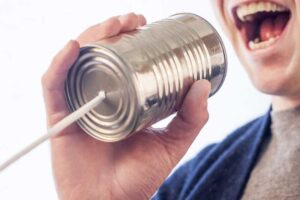
Phone messages: If applicable, update your phone system to include a pre-recorded message that informs callers about any changes in business hours or temporary closures due to the hurricane. Include alternative contact methods or emergency numbers if available.
Collaborate with local authorities: Stay in touch with local emergency management agencies and authorities to receive updates and guidance. Share relevant information with your customers to ensure they are well-informed about the hurricane’s impact on your business operations and the community.
By proactively communicating with your customers, you demonstrate a commitment to their safety and wellbeing. Clear and timely communication helps manage expectations, minimizes frustration, and fosters a sense of trust and loyalty among your customer base during challenging times.
In conclusion, preparing your business signage for a hurricane is a critical step in protecting your assets, ensuring the safety of individuals, and facilitating a smoother recovery process. By following the steps outlined in this guide, including staying informed, reinforcing the structure, removing loose objects, securing, or removing signage, protecting electrical components, documenting your signage, and communicating with customers, you can significantly reduce the risk of damage and enhance the resilience of your business signage.
Remember, the safety of yourself, your employees, and your customers should always be the top priority. It is important to adhere to any evacuation orders or safety guidelines issued by local authorities. By taking proactive measures to prepare your business signage, you demonstrate your commitment to safety, minimize potential liabilities, and contribute to the overall resilience of your business.
While no one can predict the full extent of a hurricane’s impact, being prepared and implementing precautionary measures can make a significant difference. By safeguarding your signage, you protect your brand image, maintain vital lines of communication, and ensure a faster recovery in the aftermath of the storm.
Stay vigilant, stay informed, and stay prepared. By taking the necessary steps to prepare your business signage for a hurricane, you can navigate these challenging times with resilience and ensure the continuity of your business operations.
